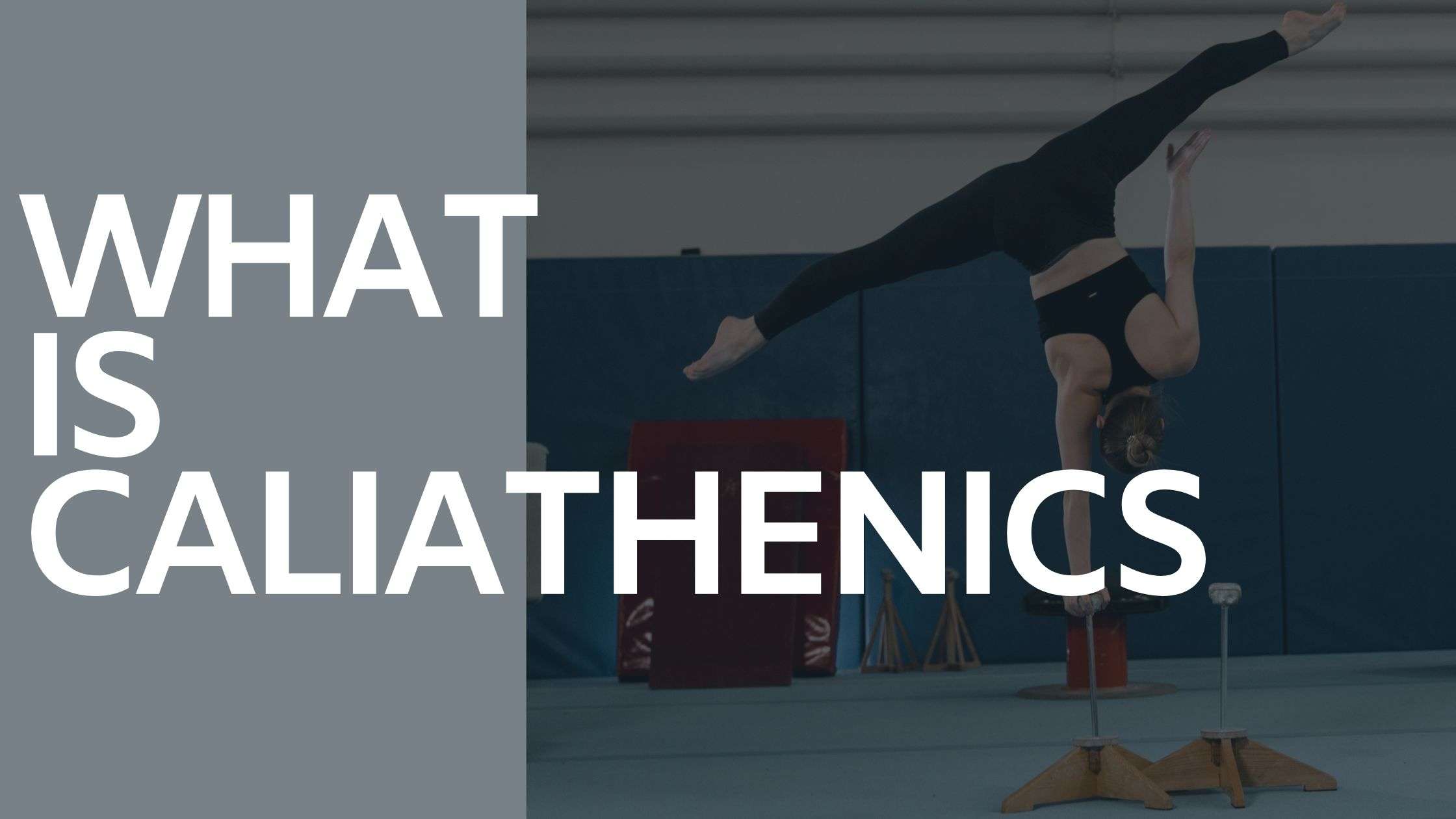What is Calisthenics?
So, what’s calisthenics all about? Well, it’s basically exercise using your own body weight. You know, stuff like push-ups, pull-ups, and squats. Nothing fancy, just you and your muscles!
The cool thing is, anyone can get into it. You start where you’re at and gradually ramp up the intensity. It’s like levelling up in a video game, but with real-life gains – getting stronger and fitter.
But it’s not just about getting swole. Calisthenics also gives you better flexibility, balance, and a healthier heart. And hey, no need to splurge on gym memberships or fancy gear. You can do it anywhere, anytime.
And here’s the kicker – it’s not just about the physical stuff. Calisthenics trains your mind too. You learn to focus, push past limits, and keep at it even when it gets tough.
Oh, and have you seen those crazy calisthenics videos online? People are getting super creative with it, mixing in gymnastics and freestyle moves. It’s like a workout and an art form rolled into one! which is called calisthenics skills.
So, if you’re looking for a fun way to get fit and feel awesome, calisthenics might just be your jam. Give it a shot and see where it takes you!
The Benefits of Calisthenics
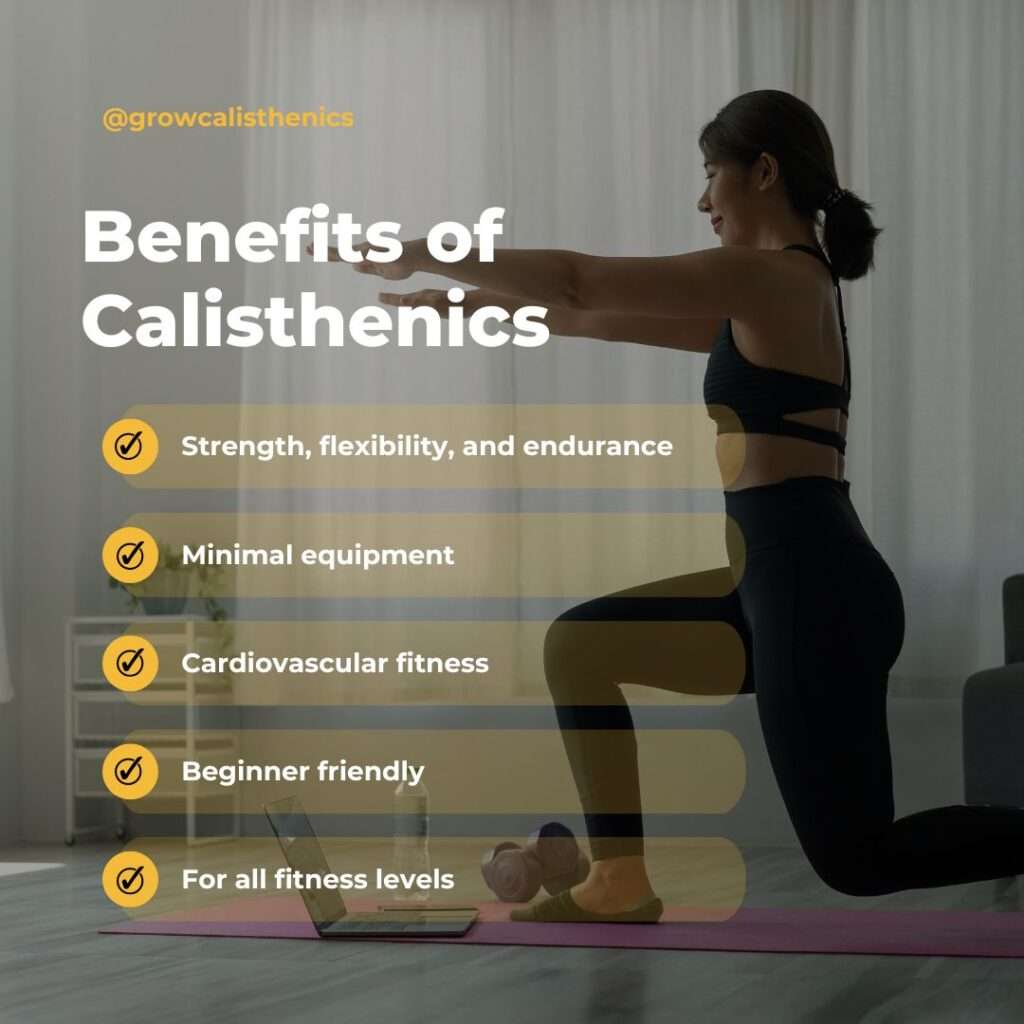
You already learned What is calisthenics, but what are the benefits of practising callisthenics? Calisthenics exercises offers numerous benefits for both physical and mental well-being.
Unlike traditional weightlifting, which often requires expensive equipment and specific gym settings, calisthenics focuses completely on resistance provided by one’s body weight. Here are some of the key benefits:
Strength and Endurance:
Calisthenics helps build muscle strength and endurance. As you progress, it increases muscle endurance, allowing you to sustain the exercise for longer periods.
Flexibility:
Many calisthenics movements involve dynamic stretching which can help loosen you up, making you more flexible and able to move around better.
Cardiovascular Fitness:
The vigorous nature of calisthenics exercises can help improve cardiovascular fitness and burn calories.
No Equipment Needed:
Calisthenics requires little to no equipment, You can do as a home workout, making it accessible and convenient for people with limited space or resources.
Beginner Friendly:
It is suitable for all fitness levels, and these exercises can be easily scaled to an individual’s current fitness level.
Variety and Efficiency:
Calisthenics offers a wide variety of exercises and can maximize the efficiency of workouts, making it ideal for those with limited time.
Core Strength:
Many calisthenics exercises engage the core, helping to build a strong and stable core.
Bone Density:
Certain calisthenics exercises, particularly plyometric movements, can contribute to increased bone density.
Also Read: Calisthenics For Beginners Guide
How to Start Calisthenics
Start by mastering fundamental bodyweight exercises like squats, push-ups, pull-ups, lunges, and planks. These movements are the fundamentals of calisthenics and provide the foundation for more advanced calisthenics workouts.
Learn Basic Bodyweight Exercises:
You have to start with basic exercises, and in calisthenics, the most basic but also most important action is the simple press-up.

That being stated, even the press-up can be divided into beginner and advanced variations. If you cannot do a press-up, start with an incline press-up. To do so, place your hands on a bench or anything of similar height that can support your body weight, and with your feet on the ground, practice the press-up movement and develop the appropriate form.
Establish a Routine:
Develop a structured calisthenics workout plan that incorporates a variety of exercises targeting different muscle groups. Include exercises that focus on strength, endurance, flexibility, and core stability to ensure a well-rounded training program.
Focus on Form and Technique:
Proper form is essential in calisthenics to maximize effectiveness and minimize the risk of injury. Pay close attention to your technique during each exercise, focusing on maintaining proper alignment and engaging the appropriate muscles.
Progress Gradually:
As you become more comfortable with basic exercises, progressively increase the difficulty by incorporating variations, increasing repetitions, or adding resistance. Challenge yourself while staying mindful of your limits to avoid overexertion.
Stay Consistent and Patient:
Results in calisthenics take time and consistency. Stay committed to your training regimen, celebrate small victories along the way, and trust in the process of gradual improvement.
Calisthenics Vs Weight Training

Calisthenics and weight training are two popular forms of strength training that can help you improve your fitness, health, and appearance.
However, they have different advantages and disadvantages depending on your specific goals and preferences.
Equipment:
Calisthenics primarily uses body weight for resistance, while weight training involves the use of external weights such as dumbbells, barbells, or machines.
Muscle Isolation vs. Compound Movements:
Weight training often involves isolating specific muscle groups with exercises like bicep curls or leg extensions
Calisthenics focuses on compound movements that engage multiple muscle groups simultaneously, like push-ups or pull-ups.
Portability and Accessibility:
Calisthenics can be done anywhere without the need for specialized equipment, making it more accessible for people who may not have access to a gym.
Weight training typically requires access to weights and equipment, which may not always be available.
Skill and Coordination:
Calisthenics often requires more skill and coordination to perform exercises properly, as it relies on bodyweight movements that require balance and control.
Weight training exercises can be simpler to learn and execute, especially for beginners.
Progression:
Both calisthenics and weight training allow for progression by increasing resistance or difficulty over time.
In calisthenics, progression often involves mastering more advanced bodyweight exercises, while in weight training, it typically involves increasing the weight lifted.
Calisthenics Exercises
From beginner-friendly calisthenics movements to advanced techniques, it offers a wide range of exercises suitable for individuals of all fitness levels.
Here is a list of Basic calisthenics exercises and instructions on how to do them.
Bodyweight Squats:

- Stand with your feet shoulder-width apart.
- Lower your body by bending your knees and pushing your hips back, as if you’re sitting down in a chair.
- Keep your chest up and your back straight.
- Descend until your thighs are parallel to the ground, then push through your heels to return to the starting position.
- Aim for 3 sets of 10-15 repetitions.
Push-Ups:

- Start in a plank position with your hands slightly wider than shoulder-width apart.
- Lower your body until your chest nearly touches the ground, keeping your elbows close to your body.
- Push through your palms to return to the starting position.
- If traditional push-ups are challenging, you can modify by performing them on your knees.
- Aim for 3 sets of 8-12 repetitions.
Assisted Pull-Ups:
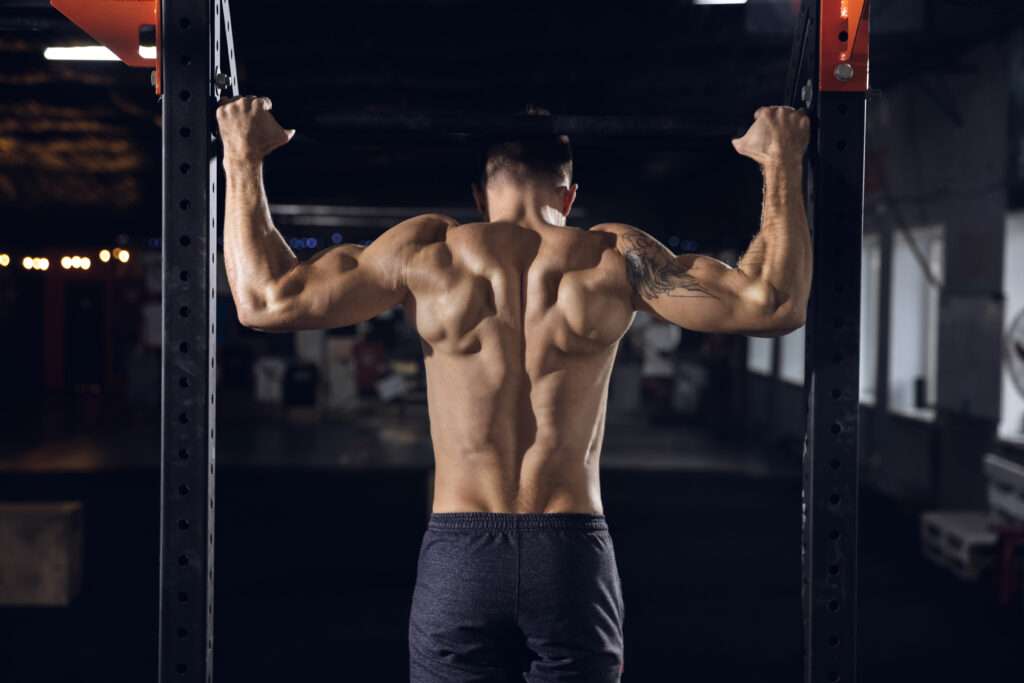
- Find a sturdy horizontal bar or use a low bar at a playground.
- Grip the bar with your palms facing away from you, hands shoulder-width apart.
- Hang from the bar with your arms fully extended.
- Pull yourself up by bending your elbows until your chin reaches or clears the bar.
- Lower yourself back down with control.
- If full pull-ups are too difficult, use a resistance band or have a partner assist you.
- Aim for 3 sets of 5-8 repetitions.
Planks:
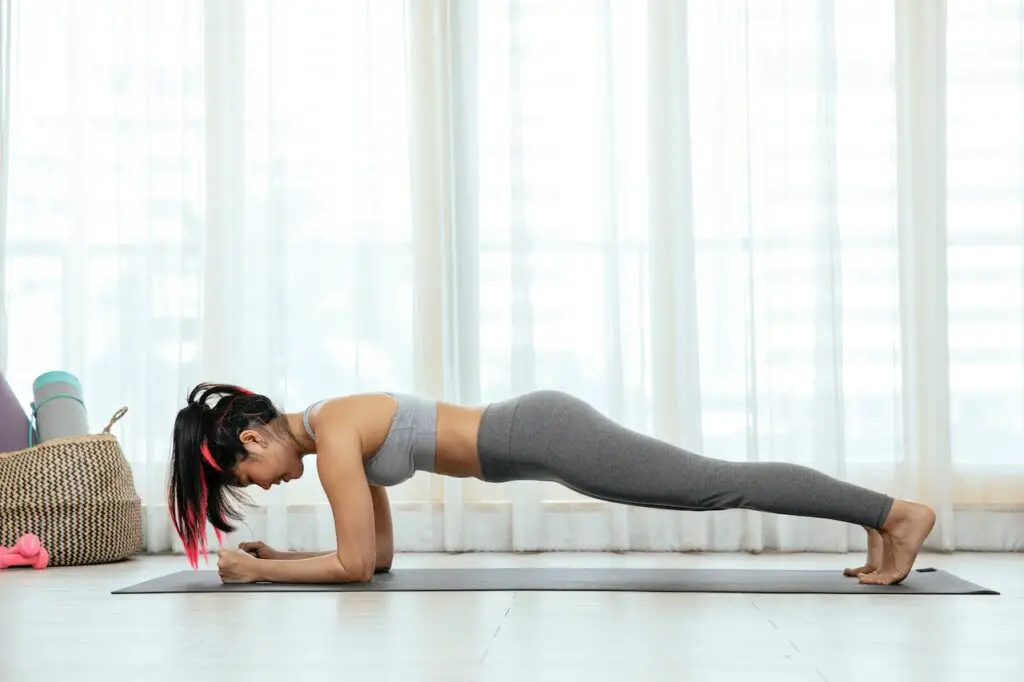
- Begin in a push-up position with your hands directly under your shoulders.
- Engage your core and keep your body in a straight line from head to heels.
- Hold this position, focusing on maintaining proper form and breathing steadily.
- Start with shorter holds (10-20 seconds) and gradually increase the duration as you progress.
- Aim for 3 sets of 20-30 seconds.
Lunges:
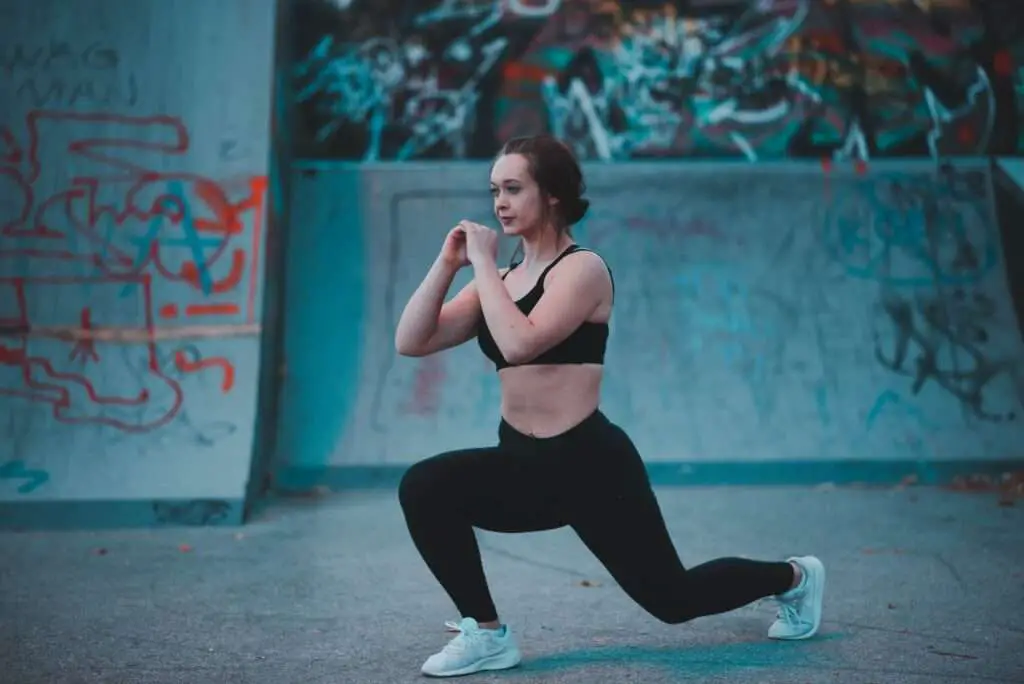
- Stand tall with your feet hip-width apart.
- Take a step forward with one leg, lowering your body until both knees are bent at a 90-degree angle.
- Keep your front knee aligned with your ankle and your back knee hovering just above the ground.
- Push through your front heel to return to the starting position.
- Alternate legs and repeat.
- Aim for 3 sets of 10-12 repetitions per leg.
Leg Raises:
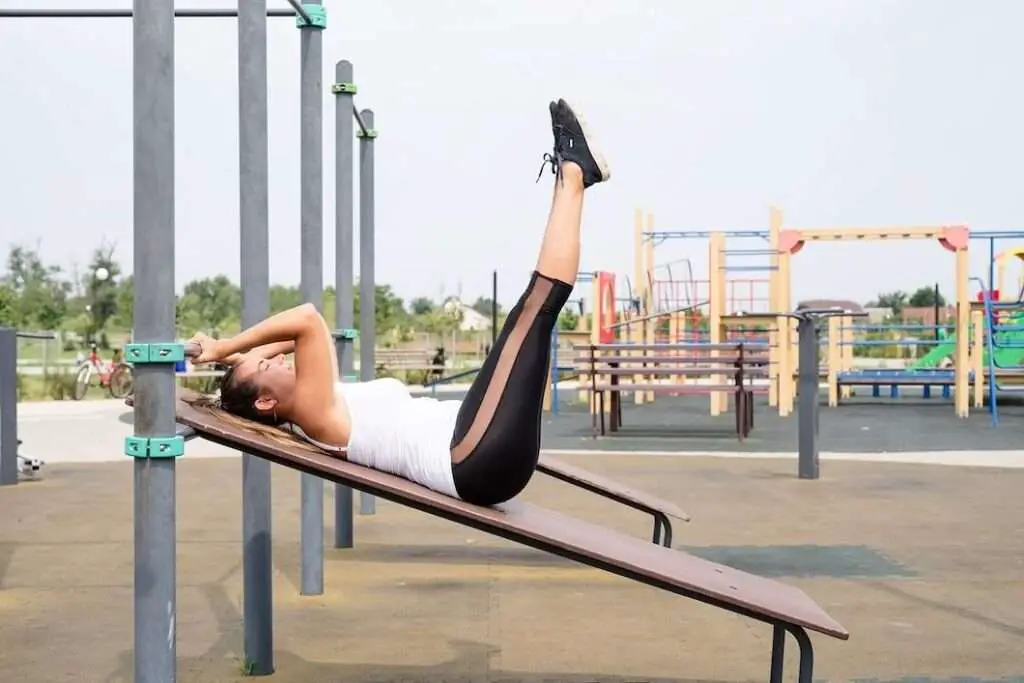
- Lie on your back with your arms by your sides and legs straight.
- Lift your legs off the ground while keeping them straight, until they form a 90-degree angle with your torso.
- Lower your legs back down with control, stopping just before they touch the ground.
- Avoid arching your back or swinging your legs.
- Aim for 3 sets of 8-12 repetitions.
Dips:

- Find parallel bars or use the edge of a sturdy chair or bench.
- Grip the bars with your palms facing inward and your arms fully extended.
- Lower your body by bending your elbows until your upper arms are parallel to the ground.
- Push through your palms to return to the starting position.
- Aim for 3 sets of 8-12 repetitions.
Calisthenics Equipment
Calisthenics equipment is generally simple and versatile, stressing the use of human weight and minimum equipment to increase strength, muscle mass, and fitness.
These tools provide a wide range of rigorous exercises ideal for people of all fitness levels. Here’s an overview of some common calisthenics equipment:
Pull-Up Bar:
This is one of the most essential pieces of equipment for calisthenics.
It allows for various upper body exercises such as pull-ups, chin-ups, and hanging leg raises.
Resistance bands:
These are elastic bands that come in different sizes, lengths, and resistance levels. You can use them to add or reduce resistance to your calisthenics exercises, depending on your needs and goals.
Resistance bands are versatile and portable and can help you with warm-ups, mobility, recovery, and progression.
Parallettes:
You can use them to do various exercises that involve pushing, such as push-ups, dips, handstands, and planches.
Parallettes are useful for increasing your range of motion, wrist health, and core stability, as well as developing advanced calisthenics skills and strength.
Gymnastic rings:
You can use them to do various upper body exercises, such as pull-ups, dips, muscle-ups, and levers.
Gymnastic rings are great for improving your stability, mobility, and coordination, as well as developing impressive skills and strength.
How Many Calories Do Calisthenics Burn?
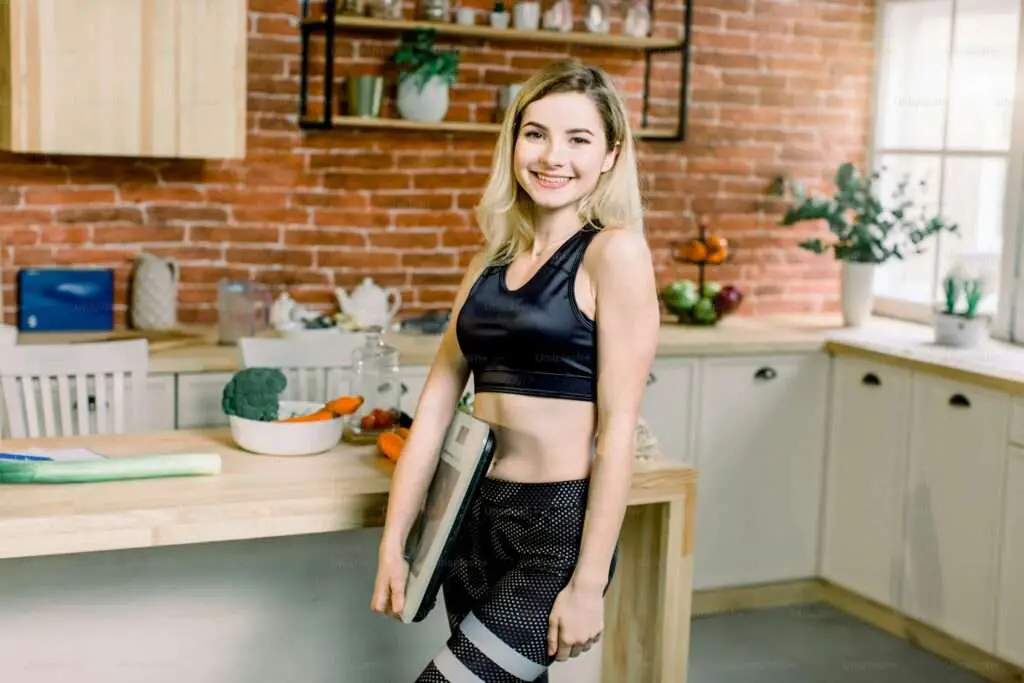
Calisthenics exercises burn different amounts of calories depending on how hard you work. Easy exercises like sit-ups and crunches usually burn around 300–400 calories in an hour.
When you do tougher exercises like pull-ups and jumping jacks, you can burn even more, about 550–700 calories per hour.
Some experts say that if you weigh 125 pounds, you might burn about 135 calories in 30 minutes of easy calisthenics. If you weigh 200 pounds, you might burn around 200 calories in the same time.
For tough calisthenics, like the ones mentioned earlier, you might burn about 240–355 calories in 30 minutes, depending on your weight.
Also, you have to decide what your goal is: if you want to increase weight or want to lose weight, your diet is the ultimate factor for weight management. No matter what training program you adopt, you need to track your calories. Be in a caloric deficit diet to lose weight and in a caloric surplus for weight gain.
These numbers are just averages, and they can change based on things like how much you weigh, how old you are, and whether you’re a man or a woman. You can use something called a Metabolic Equivalent (MET) formula to figure out exactly how many calories you’re burning with different exercises based on your weight.
The Pros and Cons of Calisthenics
Like any form of exercise, calisthenics comes with its own set of advantages and disadvantages that individuals should consider before incorporating it into their fitness routine.
Pros:
Minimal Equipment Required: Calisthenics relies on bodyweight exercises, making it accessible to everyone without the need for expensive equipment.
Versatility: Calisthenics offers a wide variety of exercises targeting different muscle groups, promoting overall strength and coordination.
Convenience: It can be performed anywhere, indoors or outdoors, without the need for a gym membership.
Improved Functional Strength: Engages multiple muscle groups simultaneously, translating into enhanced everyday performance.
Cons:
Limited Resistance: Progress may plateau when bodyweight alone becomes insufficient for further strength gains.
Risk of Overuse Injuries: Repetitive movements without proper form or rest can increase the risk of injuries.
Difficulty with Certain Movements: Some exercises require high levels of skill, strength, and coordination, potentially frustrating beginners.
Requires Adequate Space: Certain exercises may need more space, which could be a limitation in cramped environments.
Summary
Finally, calisthenics is a great way to get fit without needing fancy equipment or a gym membership. With just your body weight, you can build strength, flexibility, and keep your heart healthy.
Calisthenics exercises are simple and easy to do, making them accessible to everyone. Whether you’re new to working out or want to enhance your routine, this guide will help you succeed.
Calisthenics not only makes you physically fit but also teaches you discipline, and perseverance, and gives you a sense of accomplishment. To get the most out of calisthenics, it’s important to keep at it and focus on doing the exercises correctly. This will help you lead a healthier, more active life.
FAQs
1. Can I do calisthenics at home?
Yes, you can! Calisthenics is perfect for home workouts because you use your own body weight for exercises, so you don’t need fancy equipment.
2. Do calisthenics burn fat?
Yep, they sure do! Calisthenics workouts get your heart pumping and metabolism going, helping you burn calories and fat, especially when combined with healthy eating.
3. Is calisthenics better than going to the gym?
It really depends on what you like! Calisthenics focuses on using your body weight, which can be super effective, but some people prefer the variety of equipment at the gym. It’s all about personal preference!
4. Can I do calisthenics every day?
You can, but listen to your body! It’s important to give yourself rest days to avoid getting too tired or injured. Your muscles need time to recover and get stronger.
5. How many push-ups should I do each day?
Start with what feels comfortable and gradually increase! It’s more about doing them with good form than doing a specific number. As you get stronger, you can do more.
6. Is calisthenics okay for women?
Absolutely! Calisthenics is for everyone, including women. It’s a great way to build strength, improve flexibility, and get fit without needing a ton of equipment.
